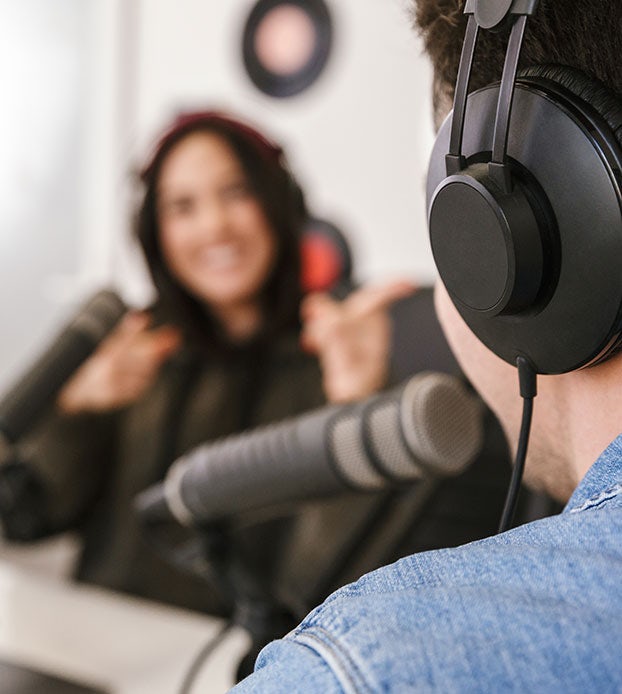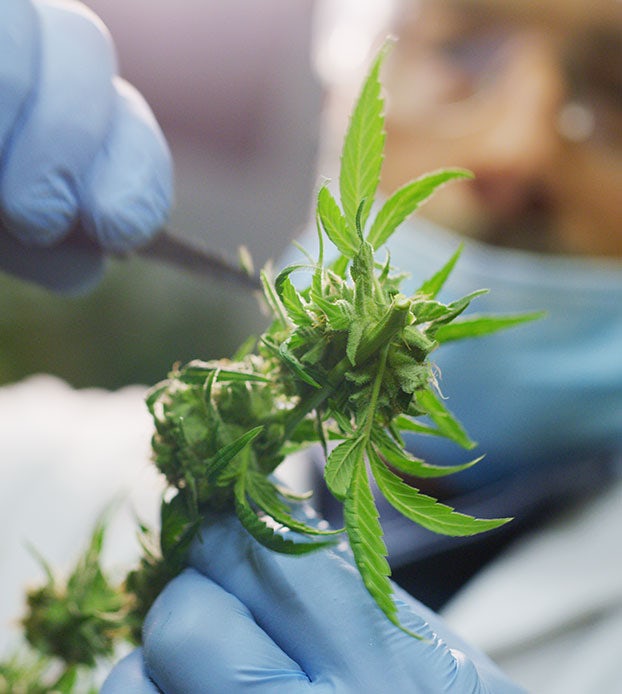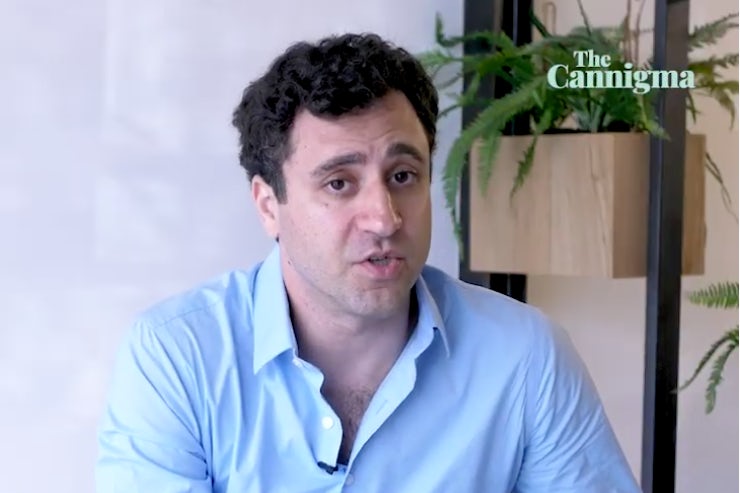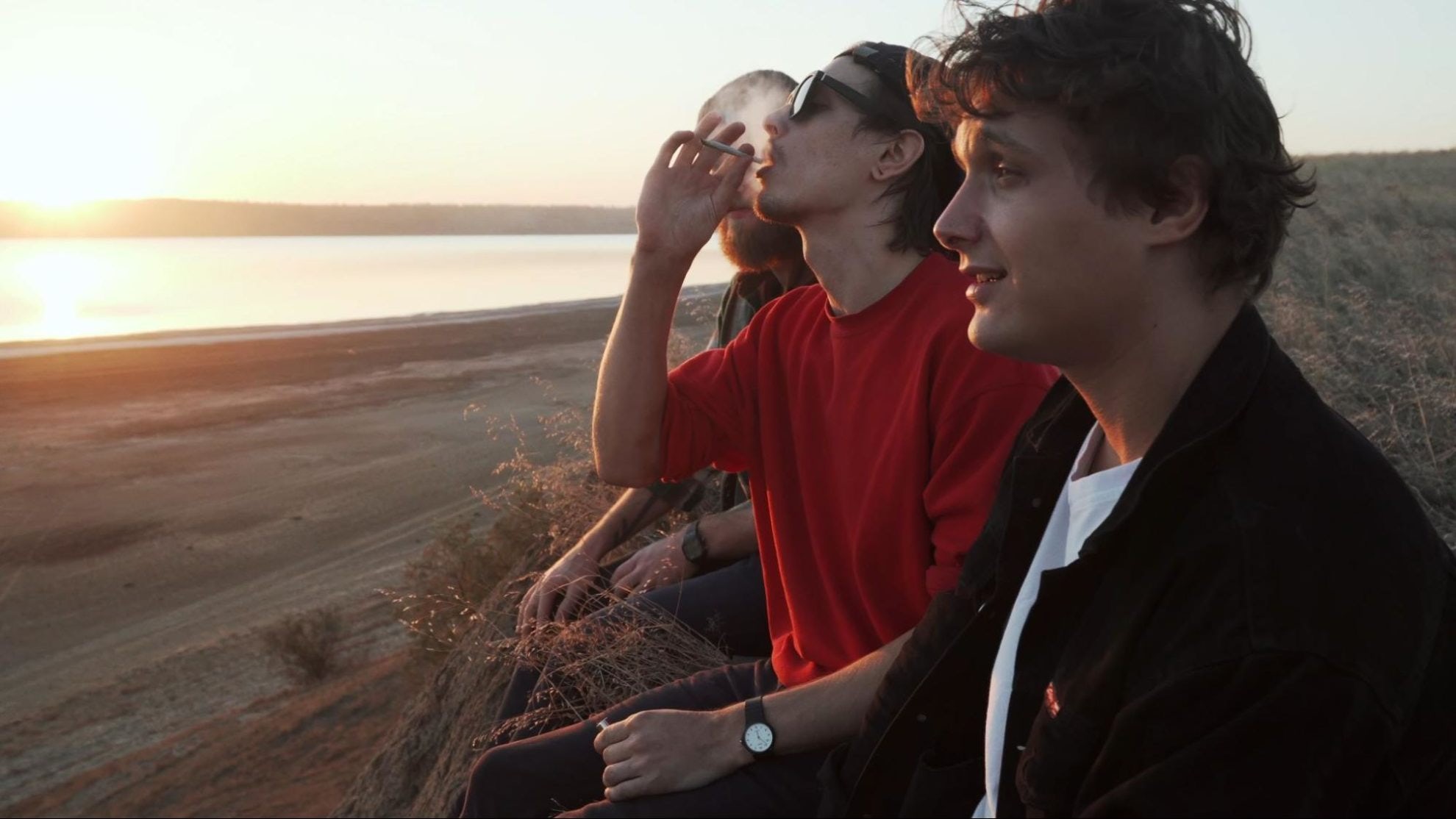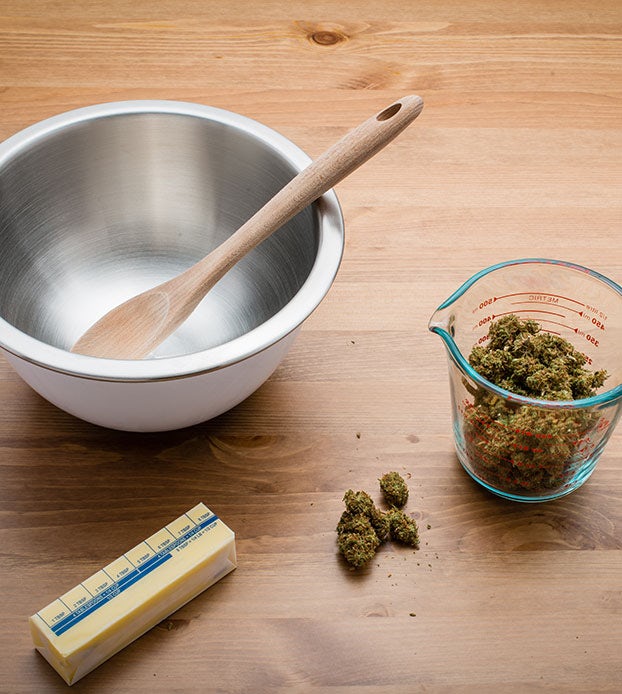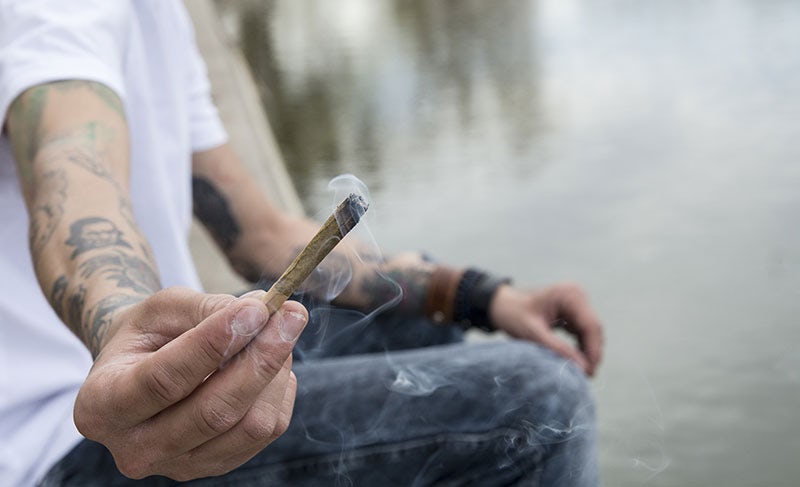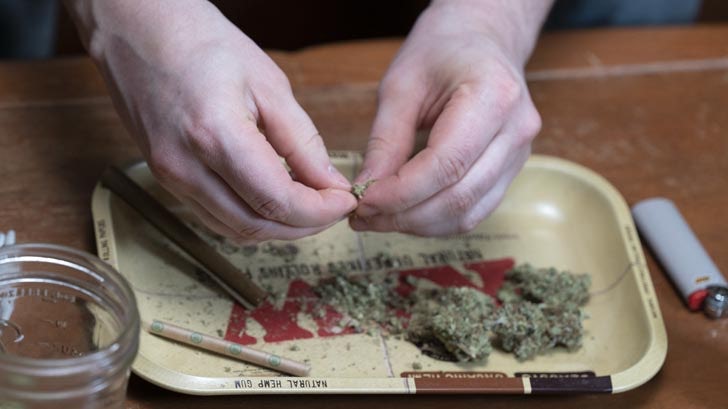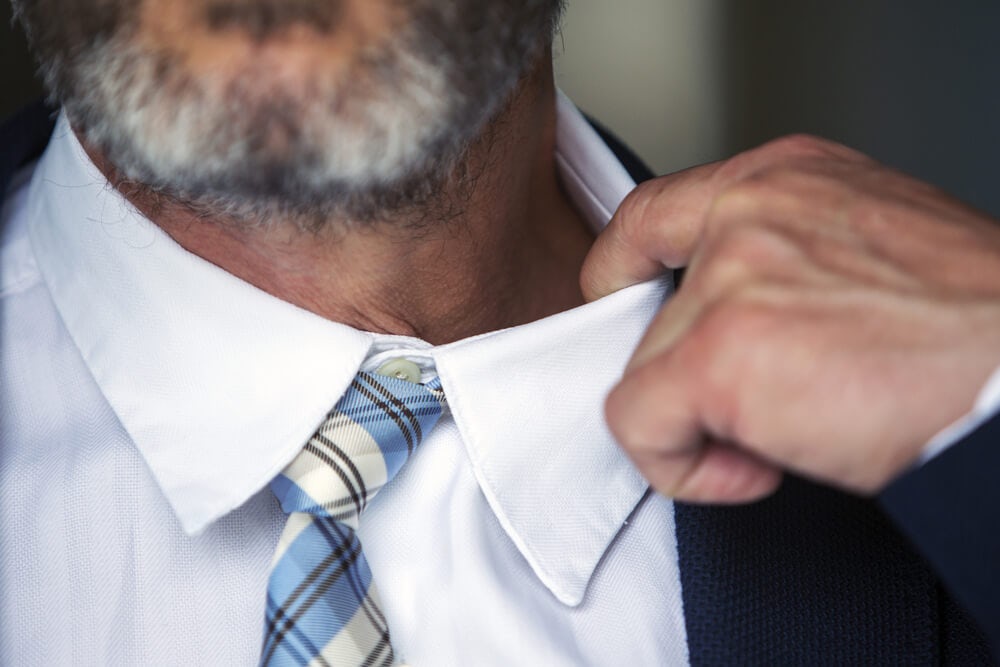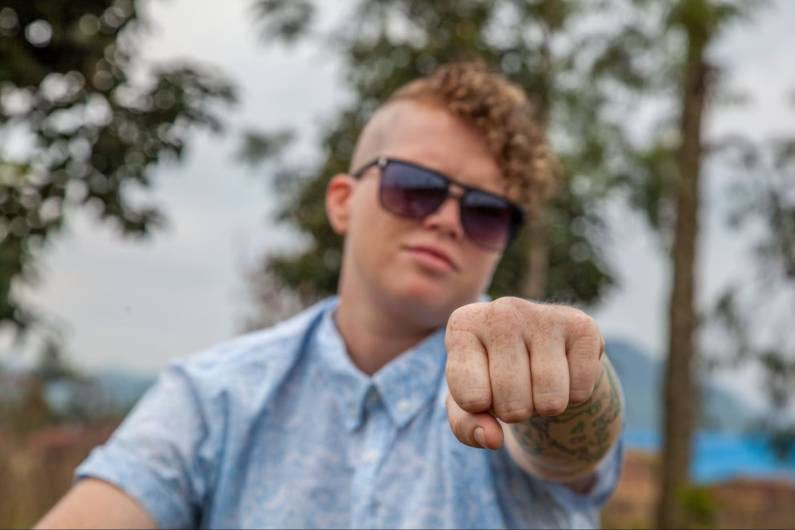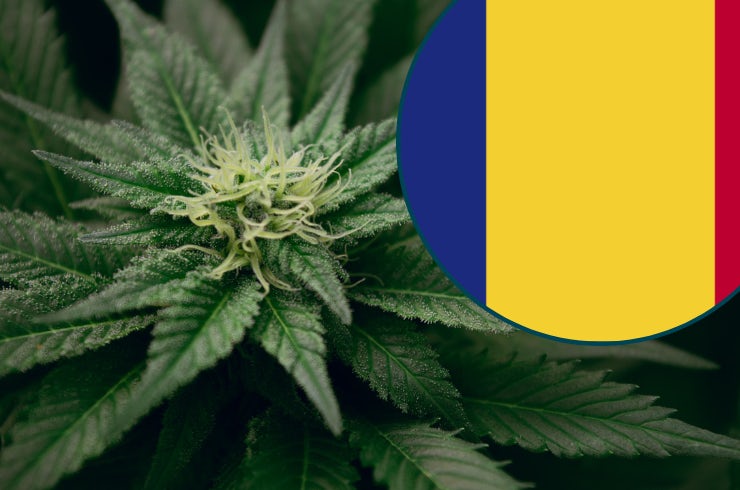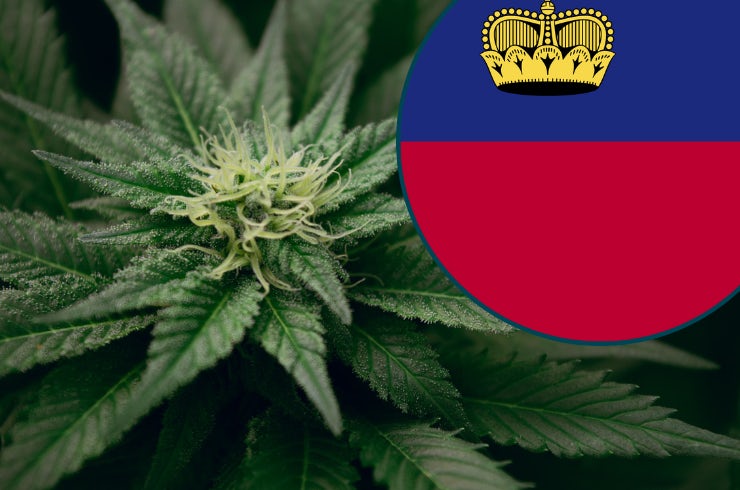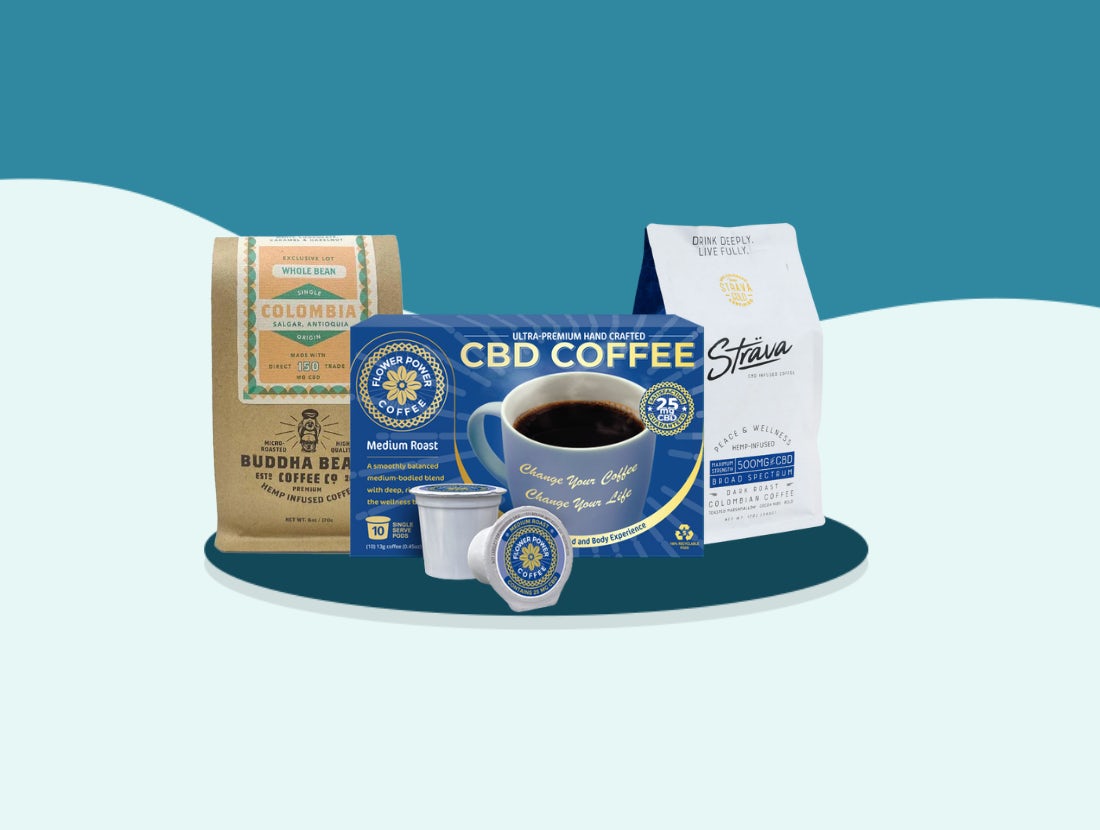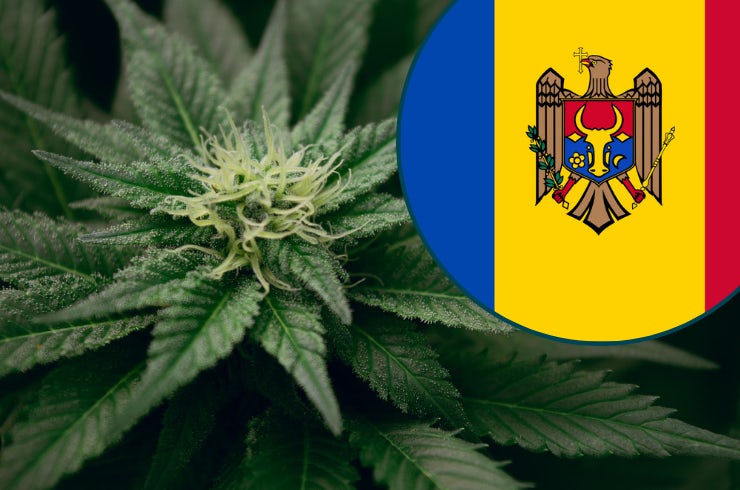Marijuana has come a long way since the days of Reefer Madness and when you first learned about it from a DARE officer. But will it ever be treated like wine, with curated tastings available at high class events?
That’s exactly what Dan Braunstein is trying to accomplish — at least until the coronavirus shut down the idea of social gatherings.
His Los Angeles based company, Grassfed, hosts cannabis-themed events that aren’t actually about cannabis, where you can sample a flight of different terpene-infused vapes or beverages at the bar.
“Cannabis should be, eventually, treated like wine. That’s where we are trying to push it,” Braunstein said on The Cannabis Enigma. “Consume with intention, consume because you really like the process of consuming cannabis. Obviously you get all the medicinal effects, but have an intention — don’t consume just to get blasted.”

Grassfed also goes to nursing homes to introduce elderly residents to modern ways of consuming medical cannabis, helping make the medicine more accessible.
Much of the stigma standing in the way of a full-on cultural shift, however, can only happen once smoking is removed from the equation, he says.
“Smoking is one of the biggest enemies when it comes to making cannabis more mainstream,” he explained. “When you compare cannabis to alcohol, and there are many ways to compare it, cannabis is a safer substance — safer, healthier, especially if you consume it mindfully and responsibly.”
In the second part of the episode [43:25], Americans for Safe Access Director of Policy Dustin McDonald discusses the regulatory situation in California, the problems with the way legalization has played out, and what changes need to be made in order to ensure everyone has real access to medical cannabis.
Produced by Elana Goldberg and Michael Schaeffer Omer-Man. Edited and mixed by Michael Schaeffer Omer-Man. Music by Desca. The Cannabis Engima is a co-production of The Cannigma and Americans for Safe Access.
Full transcript:
Elana Goldberg: Danny, thanks for joining us here today. I’m really excited to have you on the podcast, especially since you interviewed me for your podcast last week, so it’s nice to return the favor.
Dan Braunstein: Absolutely, happy to be here.
Goldberg: Great. So let’s jump straight into it. So you’ve been involved in a bunch of businesses and initiatives in the cannabis space in California over the past few years. Now Mike grew up in California, but I’ve not had the chance to visit yet. Can you start off by kind of just telling us a bit about what’s going on in the California market at the moment and, and how you’ve seen it change over the past few years?
Braunstein: So yeah, basically in 2016, Prop 64 passed and for the first time, Californians can use cannabis and buy cannabis legally as long as they’re 21 and above. So just to give you a reference, California was the first state in the U.S. which legalized cannabis for medicinal uses. That was back in 1997.
But since then obviously, many cannabis advocates pushed to legalize cannabis completely and,since 2016 it’s legalized for adult use. And essentially, I had an opportunity to start a cannabis business back then in 2016. I wanna say that I had 10 really bad ideas and maybe one or two good ideas, so I decided to start Grassfed at the end of 2016.
And basically we started to host cannabis-infused dinners in Los Angeles and in Southern California, combining different cultures and cuisines into our experiences, so basically combining food, music and cannabis into one experience.
Goldberg: A combination.
Braunstein: Yeah, we believe that, you know, they’re all three elements that connect people all over the world for obvious reasons, and we decided to combine all three. So just to give you an example, we had a Mediterranean feast, we had a funk and soul dinner, which we gave soul food and funk and soul music. So yeah, basically creating stories around those three elements.
And since then we expanded our business model and started to host other type of stunning social events,all cannabis themed. nonetheless, cannabis was never the main attraction, so cannabis was there just to enhance the experience like alcohol enhances other types of experiences. We chose cannabis.
When I say stunning social events, I mean bigge types of events, like two or three or 400 people, and we combine both live music and other types of immersive technology elements, so we are other immersive, cool experiences with cannabis.
So we basically hosted monthly events in LA and San Francisco for quite a while and decided to shift also to the private sector. Basically we offered cannabis services to private events. So if you are, you know, having your birthday party or a wedding,or any type of party, which you wanna combine cannabis in a high and sophisticated level, then you hired our services.
And what makes us quite different from the others is that we believe in a smoke free environment. We believe that cannabis should be treated more sophisticated and more in a clean and sophisticated way. So taking the smoke out of the equation and we can talk about it later, why I believe that smoke should be out of the equation when we talk about cannabis, but essentially bringing class to grass, bringing a clean experience to our client, that was our goal. So yeah, that is Grassfed. And obviously we worked very well until corona hit us six months ago.
Michael Schaeffer Omer-Man: How does that work? Is there a bar, like, you’d find at another type of event?
Braunstein: Yeah, so think about a cocktail bar or a wine bar, essentially, we had our own cannabis signature vape bar, so we had various types of desktop and handheld devices, for both flowers and concentrates. And we would give some sort of cannabis flights or cannabis tasting, if you will.
So let’s say you’re one of the guests you can come to the bar, either pick one strain that you feel connected to or otherwise try the entire selection. And again, typically we had anywhere from four to six different types of products, whether they’re THC dominant or CBD dominant.
And because it’s vaporization, you know, it’s also good for beginners for, you know, novice users that are not used to the rich smoke and the intensive smell. So, yeah, basically, you know, think about a cocktail bar or a mixologist just for cannabis.
One of our biggest hits that became pretty popular in the past, I wanna say year or so, was our terpene bar. So essentially we combined isolated cannabinoids such as CBD and THC and combined them with strain specific terpenes. We worked with an Israeli company named Eybna who provided us strain specific terpenes.
So we can basically, we can customize and personalize the cannabinoid experience if it makes sense. So when you go to a cocktail bar, you know exactly what to ask from the mixologist, he asks you about your, you know, your favorite flavors and aromas, et cetera, same with our bar.
We, you know, give you the different types of strains or strain specific terpenes that we can offer, and then we guide our guests on, you know, what strain would work better for them and what type of ratio, whether it’s more CBD or more THC will work specifically for their body or their endocannabinoid system, if it makes sense.
Omer-Man: And do you find the, you know, it’s people who have not a lot of experience with cannabis coming to these types of events? Are there even such people left in California?
Braunstein:Absolutely, you’d be surprised. So what we, you know, realized, and that’s more related to smoking, that most of, uh, non-users or, or novice users, don’t like cannabis smoke. Unlike myself, you know, I’m an ex smoker, I love the smell of cannabis. Many people find it very intimidating, so we wanna to eliminate this feeling.
So many of our guests came with their spouses who were not, you know, cannabis users per se, but then when they entered our events, they didn’t feel intimidated at all because there were, there was no hotbox environment. And to answer your question, many of them started their first cannabis experience at our events because we were able to give them a very low dose of THC or otherwise a CBD dose instead, so they won’t feel uncomfortable or,, you know, all the effects the THC can make you feel, especially if you’re a novice user. Basically we eliminate this unpredictability.
So we gave more predictability to the experience. And since our bartenders are very, very educated and experienced, then you know exactly what to give to each guest, according to their, uh, own experience with cannabis, and whether they’ll prefer high THC or high CBD products.
Goldberg: I wanna back up a little bit and, and get back to the food bit. I’m a, a big fan of food and, you know, obviously a cannabis enthusiast as well.
Braunstein: For sure.
Goldberg: What kind of combinations did you guys develop that were the most popular? You know, I’m, I’m interested from, you know, the, the kind of menu aspects.
Braunstein: You know what? I’ll shift from foods to drinks, which is, again, another type of food, but in-
Speaker 2: Sure.
Braunstein: … in a, in a different manner. So, first I think drinks are super crucial to our industry and our society, because in a way it’s kinda rooted in our society to hold the drink in your hand, in any social event, whether it’s, uh, a mitzvah or a [inaudible 00:11:24] or, or a holiday party, people are holding a glass of wine or beer in their hands and, again, it’s rooted in our society.
And I feel like if we wanna have cannabis enter the mainstream, we need to also have cannabis drinks. Uh, there are microdose, it’s easy to, uh, to drink, uh, there… Again, there is no smoke or, something that might, might have, uh, a higher. So in this matter, I think cannabis drinks are, you know, uh, crucial to our industry.
What we created essentially similar to this mixologist experience that we- we’ve done with our vaporizers, uh, we also mixed drinks. So again, uh, rather than cocktails that contain alcohol, we mixed mocktails that contain both CBD and THC. And again, we added some strain specific terpenes to each mocktail. So for instance, we had the OG Kush mocktail, uh, which actually smelled like OG Kush.
So that, that was, I think our biggest hit. Not to mention that, in the past year and a half or so, we also used fast-acting THC. Uh, not sure if all of our listeners are aware, but, uh, some of our edible products that are sold here in California contain fast-acting THC, or in other words, I think they call it, uh, nano-nanoemulsion THC, which means that, uh, the THC start to kicks in after 10 or 15 minutes.
In other words, uh, as opposed to, you know, the first generation edibles as we know it, uh, that might take 45, 60, sometimes 90 minutes to kick in, which is not a very social substa- substance when you think about it, the new generation of, uh, uh, edibles and tinctures affect you very quickly. So I think it’s a major factor in this industry to have a drink or an edible that c- you know, you can consume and get the effect right away or almost right away.
Goldberg: I guess, it’s like competing with alcohol yet again.
Braunstein: Exactly, exactly. I mean, we have to compete with alcohol. Again, when you think about alcohol, you know, I don’t know the exact percentage, but I wanna assume that, you know, anywhere from 70 to 80% of our, you know, population or adults consume alcohol in one way or another, whether it’s once a year, once a month or every day.
With cannabis, it’s not the situation. I know that, you know, many Israelis consume cannabis, some say 20, some say 25%, but if we wanna get to the mainstream to, you know, to the 70 or 80% Mark, you know, drinks and edibles are, are the way in my opinion.
Goldberg: It sounds like, you know, these events are all, uh, very much focused on the recreational market. Either is there any products or events that you guys are producing that focus on medicinal use?
Braunstein: Not really. Nonetheless, we did produce a series of educational events. That’s we’re free of charge, uh, essentially we just wanna bring, you know, uh, information about why smoking is bad and why there are better ways to consume cannabis. So we had a series of event about vaping, about terpenes, uh, about tinctures and about other types of cannabis products in the market.
I wanna say that, you know, some of that and these were from the medical community, not recreational users necessarily, but yeah, we… And actually we had one more event that was a private event. We were approached by a nursing home that wanted to be more open to cannabis and basically they wanted to educate both their staff and their people on how they should use cannabis. So basically we came to the nursing home and brought with us all the new up and coming cannabis products in the market that can fit this type of population.
So tinctures and patches and vaporizers and anything that we thought should be there and should be used by seniors. And we got, you know, really, really good feedback from both the staff and the people of this nursing home. And for me, you know, it was a, uh, a game changer because I didn’t realize that, you know, the, the fast demographic, the most fast…
I would say the fastest demographic these days to try cannabis for the first time are actually seniors, not millennials or Gen Z — seniors that, you know, when they were young, they were educated by all the misinformation that all the previous president, brought to the U.S. with their approaches to cannabis and to drugs.
And I feel like we were able to change their minds and perception about what cannabis and, and how, uh, to perceive it as a medicine rather than just a recreational drug that makes you high. So for us, it was an eye opener to see their reaction, and, you know, the fact there’s so many seniors these days that are consuming cannabis.
I think that in Israel it’s the same. I actually interviewed Inbal Sikorin yesterday on my podcast, and Inbal was the first nurse of Tikun-Olam and now she’s the nurse of NiaMedic, a company that specializes in, you know, treating elderly with both cannabis and other methods. So I think that’s definitely the future of medicine and the future of, you know, cannabis as a whole that cannabis should be consumed by everyone not only by millennials or Gen Z.
Goldberg: Yeah, definitely. We had a very lively conversation around our Friday night dinner table last week about, you know, it’s like these conversations that I love bringing up, about how many of the older generation at the table’s friends were using cannabis, and it was a lot more than I would have expected.
Braunstein: Absolutely.
Goldberg: This is obviously here in Israel. I wanna circle back. You mentioned terpenes a few times, and specifically your work with, Eybna on the formulations. I’m interested to know if they are certain terpenes or combinations of terpenes that you use more of, at your events? Is it based on strains or do you kind of pull your own combinations?
Braunstein: For sure. So, we do both strength specific and isolated terpenes, and I’ll explain. So when we started working with Eybna, we got some strain specific formulations, each formulation contained anywhere from 25 to 38 different terpenes.
Goldberg: Wow.
Braunstein: Now, it’s even better, and again, Eybna is doing an amazing job. Their new formulation contains anywhere from 65 to… up to I think, 75 terpenes. So the… It’s getting closer and closer to the real thing. As to your questions, you know, some guests preferred strain specific because they really wanted to feel and smell the aroma of their favorite strain.
And just to name a few popular ones that we had with our events, Super Lemon Haze was very popular. I think Lemon, and in general, uh, is very popular because it’s very uplifting, it’s very familiar to us, you know, we all s- you know, smell lemon or oranges, uh, or citrus, uh, since a very young age, so we were very familiar of this specific terpenes. Uh, nonetheless, we worked also with some isolates. So linalool was also very popular, we combine it in at least one third of our mocktails and it had a relaxing effect. So basically, you know, all the guests that complain that cannabis might costs paranoia or anxiety, uh, linalool is a great solution. Uh, basically it calms you down, it’s very relaxing. Uh, for the listeners who don’t know, disturbing, it’s being extracted from lavender essentially. So I, I, I’m pretty sure that, you know, that lavender has some, uh, relaxing properties and linalool is the main reason, uh, that it has this type of properties.
So, yeah, in terms of isolate, I wanna say linalool and myrcene were the only isolates that we use. Myrcene is very popular, I think it’s the most popular terpenes in any cannabis strain in California. And I think they just realized, two years ago that they were hybriding, uh, cannabis, not in the right way necessarily because, you know, almost all strains in California contain a myrcene as the, you know, the dominant terpene, uh, uh, in the plant, so.
You know, it’s something that we as humans created ourselves, but it wasn’t created by nature. So myrcene is only one example of something that we, you know, pushed as an industry to create more rich, uh, myrcene strains, rather than any other, uh, terpene in the market.
Omer-Man: You were talking about changing perceptions and the context of senior citizens and nursing homes, but you also mentioned that some of the events you do are for corporate events.
Braunstein: Yeah.
Omer-Man: I imagine that there’s a lot of resistance, you know, there’s still a lot of companies that you have to pass the drug test for in the hiring process, even in legal states like California.
Braunstein: Yeah.
Omer-Man: How far away do you think we are from these types of, you know, from a being more acceptable, whether it’s one of your type of events or just, you know, somebody’s pulling out the vaporizer joint, which I assume is more common these days at a company event or party, uh, but w- what kind of changes in perceptions and need to happen before, you know, in order to reach, uh, 70, 80% of the market like you were talking about?
Braunstein: Yeah, great question. You know, I think, realistically, we’re still far away from, you know, cannabis, no motivation, I call it. So, uh, when I say far away, I think maybe five or 10 years from now, even 15 years, it would take us to reach the same level of popularity, uh, uh, compared to alcohol.
And you mentioned the stigma, you know, as much as, you know, Californian are more progressive, uh, generally speaking of course, and they’re more open to cannabis. We still see opposition. Uh, we still see opponents that, you know, don’t believe in this plant. And, and just to give you, uh, a reference, you know, as for medical cannabis, it’s, you know, it’s across the board, everyone agrees that cannabis should be used for medicinal use. So no one, uh, thinks that it’s, it’s bad as a medicine.
Uh, but when you talk about the recreational drug, you know, there are many opponents still. And as I mentioned, I think smoking is one of the biggest enemies when it comes to, uh, making cannabis more mainstream. And I’ll explain, I think smoking in general is a bad habit, is a habit that is, you know, slowly but surely, it is going away from our world and less and less people are smoking in general, whether it’s tobacco or, or other substances.
And, you know, I think that only by, you know, bringing, uh, mainstream to cannabis and not trying to bring cannabis to mainstream, that would be the only way, uh, to get, uh, reimbursed by, you know, the majority of the population or the majority of the, uh, American citizen. Not to mention, of course the, you know, the, the federal status, the fact that cannabis is still a schedule, one substance, which is a big thing, of course. And I think the first step that should be made is to decriminalize cannabis on a federal level.
Uh, I think that’s the first step, but then once we overcome this step and cannabis is no longer, uh, a schedule, one substance, then education is the key. Education showing that, you know, we already have the data and, you know, probably, you know it, and I know it, but when it comes to medical use, you know, you see that all, uh, states that been using cannabis for medicinal users, uh, you saw a decline in opioid use and opioid death, which is, you know, very obvious to, to, to see when you see all the numbers.
I think same with re- recreational and adult use, you know, when you compare cannabis to alcohol and there are many way to compare it, cannabis is a safer substance, safer, healthier, especially if you consume it, mindfully and responsibly, you know, that’s what we’re trying to bring. With Grassfed, you know, we’re trying to bring this mindful approach to cannabis, so consume with intention don’t consume just to get high or get blasted.
And again, I’ll, I’ll take, I’ll take, uh, a given example from the alcohol world. You know, even with alcohol, alcohol can be deceived like as, as a bad drug, as an, as a positive drug, you know. And, you know, some drinkers are drinking only to get blasted and they wanna just have shots at the bar and, you know, and get drunk. That’s one approach.
The other approach, which is more sophisticated is the wine tasting approach. It’s… Let’s enjoy the process of drinking the wine, not without thinking of the outcome of whether I’ll be high or buzzed or whatever. I just like this type of wine and I’m enjoying the process.
So I think cannabis should be, you know, eventually be treated like, like wine. Uh, that’s where we are trying to push it. Consume with intention, consume because you really like the process of consuming cannabis. Obviously you get all the medicinal effects later, but have an intention, don’t consume just to get blasted. But again, to answer your question, I think it’s a matter of at least 10 years, hopefully less that would see, you know, full normalization of cannabis.
Omer-Man: I wanna change tracks. You’re Israeli, you have a podcast in Hebrew about cannabis, and there’s a lot of interaction between the two countries and the two markets. And I wonder specifically, you know, focusing on your podcast, who’s, who’s the audience for Israelis trying to learn about the cannabis world in California and vice versa?
Braunstein: Yeah. So first and foremost, we wanna have an intelligent podcast about cannabis in Hebrew. I think we’re doing a great job and I know Canna Tech is, uh, doing, uh, their own, uh, podcasts, but, you know, we want it to bring something in Hebrew for the Israeli listeners, uh, so it’d be more familiar, uh, to their ears.
And you know, for me the, the listeners are first and foremost, you know, Israelis who want to know about cannabis and the cannabis industry. So, you know, users and cannabis entrepreneurs cannabis business people, uh, regulators of course, and everyone who can shift the Israeli industry and make it and improve it compared to what it is now, because I think, you know, the… and obviously you spoke about in the past, but the Israeli reform hasn’t proved itself.
And you know, many cannabis users, uh, that are sick are suffering from this situation. So something needs to be changed for sure. You know, on one hand, Israel is a star- startup nation. You are great with green technology with agriculture, but on the other hand, your cannabis, uh, quality and quality control are not very good, and this is an understatement, of course.
So, you know, I had a passion just to know, obviously I know, and I hear the voices of legalization from Israel, and I always thought that each would have done a few years before, but now I think it’s the right time first to educate ourselves about cannabis and the cannabis industry first, how to build the industry in Israel, learning from all the mistakes that, you know, states like California and Colorado and other places in the world have done and learn how to build the right industry for your Israeli market. And I think it’s super, super essential.
Omer-Man: How do you, how do you explain the dissonance between Israel as a leader for decades, really, as an innovator from the science side of specifically medical cannabis and the, you know, being so far behind on the regulatory side of things.
Braunstein: You know, it’s a combination of a few things, you know, uh, greediness, lack of education, you know, hiring the wrong people sometimes, uh, I think currently, the people who are leading or sh- or leading the industry in Israel, you know, some of them are not the right players who should lead the industry. And obviously each player, uh, has their own interest when it comes to paving, you know, their own way in their, you know, in their industry or in their category.
So there are too many interests and too many people that are involved in, you know, leading this community. Nonetheless, there, there is no one right way, and I think there, you know, you made so many mistakes in the past 10 years, uh, when… essentially, when you start to build your medical community until today, which, you know, instead of Israel becoming, uh, a country that exports high quality premium cannabis, we need to import, uh, low or maybe mid quality cannabis from Canada, and other countries in the world.
So, you know, I think at the end of the day is just learning from mistakes. Not to mention that, yeah, you know, also in Israel, Israel is not… in terms of climate, is not the best place in the world to grow cannabis, especially not outdoors. It’s actually pretty challenging to, uh, cultivate cannabis in Israel.
So I think, you know, you just need to bring more innovation to the game and, you know, m- more importantly to bring the right people. The right people that care about, first, about the medical patients, about the users, and then care about their companies too, but not the vice versa. I think medical, medical patients should be, you know, uh, first in everyone’s prio- priority and it didn’t happen unfortunately until today, at least.
Goldberg: Yeah, I totally agree. This is actually something we were talking about just recently about how, there needs to be some sort of, I dunno, collection of all of the insights from all of the medical cannabis programs around the world. So that as new countries start opening up programs and expanding programs, we can really learn from, you know, each other’s successes and failures.
Braunstein: Yeah, a- and people, p- people… Even in Israel, I tend to think that, uh, California is like the cannabis heaven and everything is perfect here, and everything is work- worked smoothly and perfectly with our model, and i- it’s not the case. So on one hand, cannabis in California is pretty good. We know that the quality is there.
On the other hand, the black market is thriving. So some people say, some reports say that, “Over 50% of total sales are from the black market.” So there is definitely a lot to learn from California and other places in the world on what to do and on what not to do.
And, you know, if we come from, you know, a modest place, like we admit that we don’t know everything, I know that i- it’s hard for Israeli to, too- to admit it, [laughs] but because Israelis think all the time that they know everything and they, they invented the wheel, but it could come from a modest place of learning and taking care of our patient first, then I think we have a, a real chance to, to, you know, make a change in this industry.
Goldberg: Yeah, definitely. So talking about moving forward, uh, you know, you mentioned before that there’ve been a lot of changes to your business in the COVID age. Uh, what’s next for you? What are the next steps?
Braunstein: Uh, so as I… As you mentioned, I started the podcast, uh, over a month ago. It’s going very well. We, uh, already recorded over 20 episodes with some ph- phenomenal guests, uh, from both the Californian and the Israeli industry. So definitely going to continue with that and grow our audience, hopefully.
Other than that, I started working for an Israeli startup who is developing a data driven, uh, data driven vaporizer, a very unique device that gives you the ability to personalize your own experience. Uh, so this is very thrilling, uh, for me, you know. Vaping is definitely my realm and, uh, something that I- I’m very passionate about. And I feel like, uh, you know, that the product that we’re working is, is definitely a game changer.
Speaker 2: Yeah, for sure. Well, good luck with it.
Braunstein: Thank you.
Speaker 2: You gotta keep us posted as you develop.
Braunstein: Uh, another thing that I was involved in that I didn’t speak about was, uh, live music, online series that I created with some partners named High Note Sessions.
o essentially we wanted to create the first ever live music series, uh, that is cannabis-themed. So, you know, we recorded already three episodes off, uh, great musicians, such as Al King, for instance, just to have, uh, uh, music celebration of cannabis, essentially. So, uh, hopefully when COVID, uh, uh, uh, stops or, uh, leaves us at some point, or I don’t know, we’ll find a, uh, a, a, a vaccination or something, we’ll be able to first continue with this, this type of, uh, event, and then maybe continue with the, with Grassfed events.
Uh, that said, we are a- also working on an a new version of an online Grassfed event, which is kinda weird to me, you know, uh, the fact that we need to shift our in person experiential events to an online ev- uh, uh, event is something almost impossible. But again, I think that creativity is, is the, you know, the keyword for now. Be creative to reinvent yourself.
And, uh, last but not least, we are soon opening an online store where we will bring the Grassfed experience to the comfort of your sofa or home. So if you wanna vape, uh, and mix yourself some, you know, terpenes and cannabinoids, you’ll be able to do it from home without coming physically to, to our event. So that’s, that’s going to happen in the next, uh, few weeks or so.
Omer-Man: Cannabis has always been a very social, uh, activity and your business capitalizes on that and, and, you know, tries to, to enhance that event. Do you think there are elements of cannabis culture and the way there’s… the ways that people relate to it that are gonna change forever in the post COVID world?
Braunstein: Absolutely, yeah. Uh, so, you know, sharing a joint the way we know it, or even sharing a vape for that matter, uh, is going to change forever. I think, you know, sharing a joint was something that people, uh, were doing for many, many years. That was, that was one of the reasons why smoking cannabis was such a sacred ceremony for many users, but for obvious reasons, we were unable to share joints, bongs or devices with one another.
So I think… And by the way, speaking of pre-rolls and joints, you know, uh, pre-COVID, most of the pre-rolls that were sold in a dispensary, we’re half a gram to a gram to two grams, maybe. So, you know, big fat joints that were made, uh, for sharing. That said, when COVID started, then you saw a shift in the pre-roll industry. So, you know, most people that you can see now in the stores, uh, we call it dog walkers.
So they contain anywhere from 0.15 to 0.35 grams of cannabis, which allows you t- first to consume more joints throughout the day. If… Again, if you’re a heavy user without getting too blasted or otherwise just to consume the joint by yourself without sharing it. So that’s a big shift that we see.
Other than that, you know, even that the experience of visiting a dispensary and buying a product completely changed, and we, you know, I just mentioned terpenes and, you know, similar to wine that the, the way that you assess and choose cannabis and quality, eh, is by your nose. We always say that the nose knows. Your nose can guide you, which strain is good for you. But since COVID started, basically you cannot smell any product before you buy it.
So pre-COVID you go to the store or actually preProp 64, because it also, what’s related to some new regulations that were in the market. So long story short, now that you’re coming to a store, you cannot smell your product before you buy it, so essentially you buy something that you have no idea whether you like it or not.
And unlike, you know, the wine or the alcohol industry that has consistency, you know, when you buy one type of wine, you know exactly that if you buy it in a month or two months from now, you’ll get the same thing, with cannabis it’s not the same, and we know, why?
So now people need to gamble on their strengths or their products because they cannot smell it. So that’s a big differentiator, I think, uh, pre and post COVID. And I think, you know, we’ll need to reinvent some new ways to choose cannabis, to assess cannabis, uh, again, to consume cannabis socially because, you know, we’re not sharing joints anymore, so yeah, a big, big change. And I think we’ll, we’ll just need to get used to a new, new normal and, and create the ways to, uh, to enjoy it, I think.
Goldberg Definitely, it’s an exciting time.
Braunstein: For sure.
Goldberg: … for the industry. So we’ll put, uh, links in the show notes, uh, to all of the, uh, projects that you just mentioned. I think, uh, we’ll wrap up for today. Thanks so much for joining us on the podcast.-
Braunstein: Yeah, thank you guys.
Goldberg: … it’s really exciting that we got to have you over here and we’ll be in touch. Keep us posted.
Braunstein: Will do, will do, and stay safe and healthy everyone.
***
Dustin McDonald: Welcome to another edition of the Cannigma podcast. My name is Dustin McDonald and I am the Policy Director for Americans for Safe Access, the oldest and largest national organization of patients, medical professionals, scientists and concerned citizens promoting safe and legal access to cannabis for therapeutic use and research. You can check us out at safeaccessnow.org.
Today we dive into a brief segment on California’s medical cannabis program, where we will provide some background on the state program, and take a look at some of the key outstanding issues that are preventing the program from serving patients in any way that is functional.
So let’s go back, way back, to the nineties when California first got going on cannabis reforms.
CA legalized medical cannabis collectives in ‘96 via Prop 215/SB 420, and then made a series of reforms before passing a comprehensive medical access program in 2015, known as MCRSA (Medical Cannabis Regulation and Safety Act). But how was this supposed to be different or better for patients than collectives?
MCRSA established in CA for the first time a state cannabis licensing regime for medical cannabis businesses. This changed the existing medical program from a collective model, where doctors, patients, caregivers and cultivators collaborated to provide legal medical access, to one where patients could secure access from state-licensed medical cannabis retailers. In fact, MCRSA imposed a sunset of January 1, 2019 on collectives authorized under Prop 215.
Beyond organizing a licensing system for medical cannabis retailers, MCRSA also established a state licensing program for cultivators, manufacturers, testing labs and distributors, as well as a system to tax these businesses. The very next November CA voters approved a statewide adult-use ballot initiative known as Prop 64, forcing state lawmakers to dedicate the 2017 legislative session to organizing legislation that combines the state’s ‘so new its not operating yet’ medical program with a new adult-use program.
While adjustments have been made to these programs over the past four years, how do California patients think the medical program is performing five years after the state passed comprehensive medical access?
Patients responding to Americans for Safe Access 2020 patient survey indicate that cannabis product pricing is too high, that there are not enough licensed cannabis retailers across the state for patients to access, and that many pre-existing products that were available under collective models by patients no longer exist since the state forced the closure of collectives starting last year. Patients also sounded off on the state’s failure to organize employment protections for them. The state’s medical program is so bad that the rate of patient enrollment in the state program has declined steadily since the 2009-2010 fiscal year, when over 12,000 new patients registered with the state to just over 3,300 in FY 2019-2020. As of August 2020 there are 111,387 patients enrolled in California’s medical cannabis program.
So what are state lawmakers, the Governor’s office and regulators doing to address these challenges raised by patients, and what, if any, roadblocks are preventing these fixes from being implemented?
While patients have been vocal in seeking these changes, the Governor, state regulatory agencies and lawmakers have so far made no progress in fixing these issues. So let’s take a look at what is holding them up.
Under CA’s system, medical cannabis retailers, like other authorized licensing categories, must secure a license to operate from the state before opening. However, unlike some other states, CA also requires cannabis businesses to secure a local license to operate. Many CA local governments are averse to licensing cannabis businesses, even medical retailers. After the state approved comprehensive medical access in 2015 nearly 200 cities imposed bans on all medical cannabis activity. In 2019 25 cities filed suit against the state to push back against the delivery of medical cannabis from legal delivery retailers to patients. Today, five years after the state passed comprehensive medical access, two-thirds of CA cities and counties maintain bans on medical cannabis retail.
This means that CA patients in most cases have no legal medical retailer to secure medicine from, and that if there is a legal retailer near them it is likely an adult-use oriented facility that cannot provide useful information about medical cannabis products they are carrying and uses for specific ailments and treatments. Finally, it means that most CA patients get access to cannabis from illegal retailers, who are selling products that have not gone through state-mandated testing requirements to ensure product or patient safety.
I know. Holy shit, right? How is this possible and why in the hell is it still going on?
CA local governments maintain rights to zoning and land-use decisions that are included in the state constitution. While valuable and appropriate for local governments to make decisions about the configuration of their communities, it is completely unethical and discriminatory to use these powers to deny patients access to medicine that they need to live. But that is exactly what is happening across a sizable majority of the state’s 482 cities and 58 counties. And so far, no solution has been organized by state lawmakers or regulators to fix this situation.
Undoubtedly this is not an easy fix, but it is unacceptable to patients for this to continue, and it should be unacceptable for state elected leaders too. Medical cannabis is as important to the treatment of cannabis patients as traditional pharmaceutical products are to treating the conditions for which they are effective and appropriate. So cannabis patients need the same ease of access to medical cannabis retail outlets that pharmaceutical patients do to pharmacies, and state and local elected leaders should work together to provide access parity.
So when can patients expect to see this mess fixed?
Patients hope that state lawmakers, regulators and local leaders will work together to address this issue, along with the other issues mentioned on this podcast today related to employment protections and product pricing, in 2021. However that will be challenging given the many other emergency issues the state will be grappling with during COVID. One thing is for sure – Americans for Safe Access, patients, doctors and dedicated medical cannabis businesses across the state will be advocating aggressively for these changes to be made. We hope you will join us by going to safeaccessnow.org and signing up to be a volunteer.
Thank you again for tuning in to today’s Cannabis Enigima podcast. Looking forward to speaking with you again soon.
Sign up for bi-weekly updates, packed full of cannabis education, recipes, and tips. Your inbox will love it.

 Shop
Shop Support
Support